(Lire ci-dessous la version en français et en anglais de l’article). Version PDF
Ispirato dai film di fantascienza e dalle interazioni umane nelle grandi città, Bas Losekoot, 42 anni, fotografo urbano di Amsterdam, è ospite del Verzasca Foto Festival che quest’anno (2021)* si svolge sul tema «Questioni di tatto».
Verzasca Foto Festival
Brione Verzasca (TI)
Sul tema « Questioni di tatto »
Bas Losekoot
Introduzione
Una volta non è consuetudine…
Una volta non è consuetudine… * Dal 2 al 5 settembre 2021 si è svolto il Verzasca Foto Festival, in Ticino. Ma le mostre a cielo aperto presentate lì sono ancora visibili fino al 3 ottobre 2021. Il nostro giornalista, Matteo Cheda, ha avuto una cotta per il lavoro di un fotografo olandese, Bas Losekoot. Photoagora.ch si propone di parlare solo di fotografi svizzeri o residenti in Svizzera. Per questa volta, che non sarà consuetudine, stiamo rompendo la fila per questa piccola deviazione in Olanda… E per chi avrà ancora l’opportunità di andare a Brione Verzasca per vedere le mostre entro ottobre, sappiate che poter scoprire il lavoro di cinque fotografi svizzeri: Kim da Motta, Mathilde Olmi, Nathalie Vigini, Nicolas Poli e Red Rubber Road.
Matteo Cheda: Lei lavora in molte città del mondo. Come si sente quando espone le sue opere in un piccolo paese della Valle Verzasca?
Bas Losekoot: Sono stato felicemente sorpreso di essere stato invitato a stare qui, in mezzo alle montagne. Ti senti dentro le forze della natura, le rocce, e quanto ci sentiamo piccoli tra di loro.
M. C.: Il suo progetto riguarda l’urbanistica. Un enorme contrasto.
B. L.: Sì. Molte persone vedono le mie fotografie e parlano di zoo umano o giungla urbana. Ed è proprio così che è una città. Una sorta di sostituto di una giungla naturale dove tutto è fatto di cemento.
M. C.:Se dovesse fare delle foto in Valle Verzasca, da dove inizierebbe?
B. L.: Andrei nei posti più affollati che potrei trovare. Dove posso vedere le interazioni umane.
M. C.: Ad esempio davanti a una scuola, o al parco giochi?
B. L.: Va bene sì, ma preferirei andare dove la gente lavora. Ad esempio, al mattino o alla sera quando le persone vanno al lavoro o escono per tornare a casa.
M. C.:Nelle sue foto ho visto tanti adulti ma pochi bambini.
B. L.: È vero. Il progetto riguarda davvero il progresso e cosa significa per una città. A volte penseresti di avere i maggiori progressi nella città più grande. Ma il progresso urbano non è la stessa cosa del progresso umano. Voglio fotografare persone che devono mettere in pratica questo cosiddetto progresso. Ecco perché mi sto concentrando sulle persone che lavorano, che vanno avanti e indietro durante l’ora di punta.
M. C.:L’ora di punta è la mattina e la sera.Proprio quando c’è una buona luce per le fotografie.
B. L.: Sì, la luce è perfetta. In quei momenti le città sono molto affollate e la gente ha fretta.
M. C.:Che fotocamera usa?
B. L.: Uso fotocamere Nikon. Ho iniziato con una D200, poi una D700 e ora uso una D850.
M. C.:Elabora le sue foto?
B. L.: Sì, ma non così tanto. Le inquadro diversamente, taglio un po’ in alto e in basso. Uso Photoshop solo per fare quello che farei in una camera oscura. Lavoro con i contrasti e aggiungo un po’ di colore, ma non sostituisco mai nulla.
M. C.:Quando ha iniziato questo mestiere?
B. L.: Nel 2001, dopo i miei studi all’Accademia d’Arte a L’Aia (Paesi Bassi), quando avevo 21 anni. Mi sono laureato con un progetto mixed media, video e fotografie. In seguito, poiché ero interessato ai film, ho studiato cinematografia all’Accademia cinematografica dei Paesi Bassi, ad Amsterdam. Dopo un po’ di tempo, la fotografia mi era mancata così tanto che ci sono tornato. Tre anni fa volevo fare un master e ho seguito un corso di un anno alla Goldsmiths, University of London, in sociologia, fotografia e cultura urbana. Era la cosa perfetta per me. Volevo sapere che storia potevo raccontare con le mie foto. Stavo cercando dove potevo inserire le mie immagini in un quadro teorico sociologico.
M. C.:Guardando indietro, farebbe qualcosa di diverso?
B. L.: All’inizio, il mio progetto riguardava grandi spazi, più paesaggi urbani. Più tardi, ho fotografato più primi piani.
Se dovessi rifare tutto da capo oggi, inizierei con le persone e poi le collocherei in un contesto. Prima con un obiettivo macro e poi con un obiettivo grandangolare.
M. C.:Ha imparato di più dalla scuola o dall’esperienza pratica?
B. L.: È difficile da dire. Sono stato un fotografo per tutta la vita. Mio padre era un fotografo. Ho avuto la mia prima macchina fotografica quando avevo 14 anni.
M. C.:Suo padre è stato il suo primo maestro?
B. L.: Sì. C’erano sempre apparecchi fotografici in giro. Avevamo molte fotocamere diverse, a partire dalle piccole Leica. Mio padre era un fotografo industriale ad Amsterdam. Ha realizzato fotografie di reazioni chimiche, condutture e macchine. Al liceo ero nel club di fotografia. Avevamo una camera oscura. È lì che ho imparato a lavorare con i contrasti in bianco e nero. Allora, pensavo di essere uno dei pochi a fare fotografia. E poi ho notato che c’era un’intera scuola a riguardo. Fu allora che mi resi conto della grande industria dietro la fotografia.
M. C.:Come descriverebbe il suo stile?
B. L.: Ho pensato molto a questo, dove classificare il mio stile. Mi sento un fotografo documentarista. Ma il mio stile è la fotografia urbana combinata con l’illuminazione cinematografica. Ho messo della luce artificiale nelle mie fotografie. In un certo senso, è una fotografia documentaria. Ma cambi anche un po’ la realtà. È un po’ troppo surreale per la fotografia documentaria.
M. C.: Cosa può esprimere meglio con l’uso delle luci artificiali?
B. L.: Il flash cambia le cose che vediamo nelle strade perché aggiunge un po’ di dramma. Ci si ispira a questa doppia luce se si cammina in una zona molto congestionata, molto affollata in mezzo a grattacieli e la luce naturale viene riflessa dalle finestre. Volevo creare questa situazione io stesso, scattando fotografie interessanti anche nelle giornate nuvolose. Poi ho pensato: perché non usare due flash. Uno come retroilluminazione e uno davanti.
M. C.:Lei cerca di usare le luci dello studio per le strade?
B. L.: Un po’, sì. In studio utilizzo luci diverse da direzioni diverse. E poi ho pensato: perché non portare tutte queste luci nelle strade? Vedo la strada come un luogo adattabile. Ti concentri su certe cose, rendendo l’ambiente più scuro. Quindi, ho portato le luci fuori dallo studio nelle strade per creare una sorta di nuova realtà.
M. C.:Nelle sue foto ho visto il contesto generale e l’amore per i dettagli.Da dove parte di solito?
B. L.: Quello che faccio è molto semplice. Cammino per la città con la mia macchina fotografica, i miei flash e i miei treppiedi. Cerco un posto interessante, dove le persone si incrociano, di solito all’angolo di una strada, vicino a un ingresso, a un ufficio o a un supermercato. Poi comincio a fare alcuni esperimenti. Cerco di fotografare due persone che si incrociano o faccio scatti totali, ad esempio un intero edificio. Poi provo a usare il mio teleobiettivo da 200 millimetri e mi avvicino molto. Ed è lì che vedo quelle piccole cose come il modo in cui due persone si guardano, i sentimenti che vengono espressi. Questo è quello che trovo più interessante.
M. C.:Come si inseriscono le sue fotografie nel tema delVerzascaFotoFestival «Questioni di tatto»?
B. L.: Toccare è qualcosa che tutti noi desideriamo come esseri umani. Nella vita urbana ci sono tutti questi piccoli tocchi. Ci incontriamo, ci tocchiamo le spalle e in luoghi affollati siamo impegnati a evitare di toccare gli altri. Nella metropolitana, cerchiamo di mantenere le distanze dalle altre persone. Perché abbiamo un po’ paura di toccarci. C’è questo momento emozionante: toccare o non toccare. E questo cambia da una città all’altra. Ad esempio, a New York e a Londra, nelle città più occidentali e ricche dove tutto è meglio organizzato, le persone mantengono una distanza maggiore. Ma quando ho visitato città come Lagos in Nigeria o Mumbai in India, ho notato che questa distanza personale è molto più ridotta.
M. C.:Segue qualche modello?Voglio dire, altri fotografi?
B. L.: C’era questo film del 1982, Koyaanisqatsi, con la musica di Philip Glass con immagini di vita urbana e grandi spazi naturali. È una sinfonia cittadina. Una cosa bellissima dove per due ore si vedono solo immagini di città e paesaggi. È stata una grande ispirazione per me. Ho iniziato a vedere i modi in cui ci stiamo muovendo in città.In generale, ho preso molta ispirazione dai film. Il modo in cui creo una composizione si basa su quei film di fantascienza degli anni ’90, su come vivremo in futuro, questo genere di cose. Vengo da un background documentaristico e altri fotografi sono importanti per me. Ho seguito un seminario con Alex Webb di Magnum Photos. È uno dei migliori street photographer. Ci sono altri fotografi che fanno un lavoro straordinario, come Paul Graham. Per la luce mi sono ispirato a Gregory Crewdson.
M. C.:Può vivere vendendo foto d’arte?
B. L.: No. Lavoro anche come fotografo su incarico. Faccio fotografia commerciale e ritratti. Ma ho una galleria che vende le mie fotografie e ne vendo alcune alle riviste. Voglio realizzare il mio progetto in modo artistico ed editoriale. Ho una responsabilità nei confronti delle persone che fotografo. Lavoro a questi progetti da 10 anni e già dopo due anni le mie immagini di New York sono state esposte in un grande festival fotografico nei Paesi Bassi. E poi sono state esposte in Belgio, Francia, Cina, Lituania, Turchia e Nigeria.
M. C.:Che differenze ha trovato tra le immagini e i clienti nei diversi paesi?
B. L.: Ho scattato le foto più interessanti a Mumbai, Lagos e San Paulo. Ma vendo la maggior parte delle foto scattate a New York e Londra. I miei acquirenti sono principalmente studi di architettura, studi grafici e studi legali. Vendo anche a singoli acquirenti d’arte. Le mie fotografie riguardano la vita lavorativa, la vita di tutti i giorni. Le persone in uno studio legale potrebbero lavorare in un posto così.
M. C.:Qual è la cosa più difficile nel suo lavoro?
B. L.: Sono molto consapevole che sto fotografando persone che non sanno di essere fotografate. Così, ho dovuto essere molto rispettoso come tratto queste persone. Non mi nascondo per strada. Dimostro che le sto fotografando. Ma devo essere un po’ inconsapevole di loro. Devo entrare nella loro vita con discrezione.
M. C.:Alcune persone chiedono di non essere fotografate.
B. L.: Succede a volte. Devi essere consapevole e responsabile.
M. C.:Chiede il permesso di pubblicare le foto?
B. L.: Non parlo mai con le persone prima di aver scattato loro una foto. Dopo passano e non li vedo più. Quando fotografo, c’è un flash. Quindi, le persone vedono quello che ho fatto. Poi le guardo e sorrido. A volte mostro loro le foto. Se non piacciono, posso eliminarle. Mi aspettavo molti più guai. Finora molte persone sono state curiose e interessate. Si sono dimostrate molto positive per come sono state fotografate.
M. C.:Qual è l’aspetto più bello del suo lavoro?
B. L.: La fotografia come capacità di riflettere sulla vita e sul modo in cui ci comportiamo. Spero che il mio lavoro possa aprire gli occhi, far riflettere le persone sul significato della vita urbana moderna e produrre un appello per un ambiente più aperto e sociale.Il mio progetto si chiama «Out of Place» perché ci sentiamo un po’ fuori posto in mezzo a una grande folla. Se lo riportiamo alla storia naturale, il nostro cervello non è completamente predisposto per la vita urbana. Nelle città ci confrontiamo con così tanti estranei che non sappiamo come trattarli. Ed è per questo che ci sentiamo fuori posto.
M. C.:Che consiglio darebbe a un quattordicenne che vuole diventare fotografo?
B. L.: L’essenza è l’osservazione. Puoi imparare molto semplicemente stando fermo per strada, guardando cosa sta succedendo e cercando di trovare un significato nel modo in cui le persone si trattano a vicenda. Aspetta molto tempo, non avere fretta, prenditi il tuo tempo per realizzare il tuo progetto.
«Le flash change les choses que nous voyons dans les rues parce qu’il ajoute un drame supplémentaire»
Par Matteo Cheda, journaliste
2 avril 2022
Inspiré par les films de science-fiction et les interactions humaines dans les grandes villes, Bas Losekoot, 42 ans, photographe urbain d’Amsterdam, est l’un des invités du Verzasca Foto Festival qui a cette année (2021)* pour thème «Questions de toucher».
Verzasca Foto Festival
Brione Verzasca (TI)
Sur le thème «Questions de toucher»
Bas Losekoot
Introduction
Une fois n’est pas coutume…
Le Verzasca Foto Festival, dans le Tessin, s’est déroulé du * 2 au 5 septembre 2021. Mais les expositions en plein air qui y sont présentées sont encore visibles jusqu’au 3 octobre 2021. Notre journaliste, Matteo Cheda, a eu un coup de cœur pour le travail d’un photographe hollandais, Bas Losekoot. Photoagora.ch a pour vocation de parler uniquement des photographes suisses ou basés en Suisse. Pour cette fois, qui ne sera pas coutume, nous brisons notre ligne pour ce petit détour au Pays-bas… Et pour ceux qui auront encore l’occasion d’aller à Brione Verzasca voir les expositions d’ici octobre, sachez que vous pourrez y découvrir les travaux de cinq photographes suisses: Kim da Motta, Mathilde Olmi, Nathalie Vigini, Nicolas Poli et Red Rubber Road.
Matteo Cheda: Vous travaillez dans de nombreuses villes à travers le monde. Comment vous sentez-vous lorsque vous faites une exposition dans un petit village du Val Verzasca?
Bas Losekoot: J’ai été agréablement surpris d’être invité ici, au milieu des montagnes. Vous ressentez à l’intérieur les forces de la nature, les rochers et à quel point nous nous sentons petits parmi eux.
M. C.: Votre projet porte sur l’urbanisme. Un contraste énorme.
B. L.: Oui. Beaucoup de gens voient mes photographies et parlent de zoo humain ou de jungle urbaine. Et c’est vraiment ce qu’est une ville. Une sorte de remplacement d’une jungle naturelle où tout est en béton.
M. C.: Si vous deviez prendre des photos dans le Val Verzasca, par où commenceriez-vous?
B. L.: J’irais dans les endroits les plus fréquentés que je pourrais trouver. Là où je pourrais voir des interactions humaines.
M. C.: Par exemple devant une école, ou sur une place des jeux?
B. L.: C’est cool ouais, mais je préférerais aller là où les gens travaillent. Par exemple, le matin ou le soir lorsque les gens vont au travail ou le quittent pour rentrer chez eux.
M. C.: Sur vos photos, j’ai vu beaucoup d’adultes mais pas tant d’enfants.
B. L.: C’est vrai. Le projet est vraiment sur le progrès et ce que cela signifie pour une ville. Parfois, vous pourriez penser que vous avez le plus grand progrès dans la plus grande ville. Mais le progrès urbain n’est pas le même que le progrès humain. Je veux photographier des gens qui doivent mettre en pratique ce soi-disant progrès. C’est pourquoi je me concentre sur les personnes qui travaillent, qui font des allers-retours aux heures de pointe.
M. C.: Les heures de pointe sont le matin et le soir. Exactement quand vous avez une bonne lumière pour les photos.
B. L.: Oui, la lumière est parfaite. Dans ces moments-là, les villes sont très peuplées et les gens sont pressés.
M. C.: Quelle caméra utilisez-vous?
B. L.: J’utilise des appareils photo Nikon. J’ai commencé avec un D200, puis un D700 et maintenant j’utilise un D850.
M. C.: Modifiez-vous vos photos?
B. L.: Oui, mais pas tant que ça. Je les cadre différemment, je coupe un peu le haut et le bas. J’utilise Photoshop uniquement pour faire ce que je ferais dans une chambre noire. Je travaille les contrastes, j’ajoute un peu de couleur, mais je ne remplace jamais rien.
M. C.: Quand avez-vous commencé ce travail?
B. L.: En 2001, après mes études à l’Académie des Beaux-Arts de La Haye (Pays-Bas), alors que j’avais 21 ans. J’ai obtenu mon diplôme avec un projet de médias mixtes, vidéos et photographies. Par la suite, parce que je m’intéressais au cinéma, j’ai étudié le cinéma à l’Académie de cinéma néerlandaise, à Amsterdam. Après un certain temps, la photographie me manquait tellement que je m’y suis remis. Il y a trois ans, je voulais faire un master et j’ai suivi un cursus d’un an à Goldsmiths, University of London, en sociologie, photographie et culture urbaine. C’était parfait pour moi. Je voulais savoir quelle histoire je pourrais raconter avec mes photos. Je cherchais où je pourrais mettre mes images dans un cadre théorique sociologique.
M. C.: Avec le recul, feriez-vous quelque chose de différent?
B. L.: Au départ, mon projet concernait les grands espaces, plus le paysage urbain. Plus tard, j’ai photographié plus de gros plans. Si c’était à refaire aujourd’hui, je commencerais par les gens et ensuite je les replacerais dans un contexte. D’abord avec un objectif macro puis avec un objectif grand angle.
M. C.: Avez-vous appris plus de l’école ou de l’expérience pratique?
B. L.: C’est difficile à dire. J’ai été photographe toute ma vie. Mon père était photographe. J’ai eu mon premier appareil photo à 14 ans.
M. C.: Votre père a été votre premier maître?
B. L.: Oui. Il y a toujours des appareils photos autour de moi. Nous avions beaucoup d’appareils photo différents, à commencer par les petits Leica. Mon père était photographe industriel à Amsterdam. Il faisait des photographies de réactions chimiques, de pipelines et de machines. Au lycée, j’étais dans le club de photographie. Nous avions une chambre noire. C’est là que j’ai appris à travailler les contrastes noir et blanc. À l’époque, je pensais être l’un des rares à faire de la photographie. Et puis j’ai remarqué qu’il y avait toute une école à ce sujet. C’est à ce moment-là que j’ai réalisé la grande industrie derrière la photographie.
M. C.: Comment décririez-vous votre style?
B. L.: J’ai beaucoup réfléchi à ça, où classer mon style. J’ai l’impression d’être un photographe documentaire. Mais mon style est la photographie urbaine combinée à un éclairage cinématographique. J’ai mis un peu de lumière artificielle dans mes photographies. C’est en quelque sorte une photographie documentaire. Mais vous changez aussi un peu la réalité. C’est un peu trop surréaliste pour la photographie documentaire.
M. C.: Que pouvez-vous mieux exprimer avec l’utilisation de lumières artificielles?
B. L.: Le flash change les choses que nous voyons dans les rues parce qu’il ajoute un drame supplémentaire. Il s’inspire de cette double lumière quand vous marchez dans une zone très encombrée et très fréquentée au milieu d’immeubles de grande hauteur et que la lumière naturelle se reflète par les fenêtres. Je veux créer cette situation moi-même. Je voulais aussi prendre des photos intéressantes par temps nuageux. Puis j’ai pensé: pourquoi ne pas utiliser deux flashs? Un comme rétro-éclairage et un à l’avant.
M. C.: Vous essayez d’utiliser les lumières du studio dans les rues?
B. L.: En quelque sorte, oui. En studio, j’utilise différentes lumières dans différentes directions. Et puis j’ai pensé, pourquoi ne pas amener toutes ces lumières dans les rues ? Je vois la rue comme un lieu modulable. Vous vous concentrez sur certaines choses, en assombrissant l’environnement. Alors, j’ai emmené les lumières à l’extérieur du studio dans les rues pour créer une sorte de nouvelle réalité.
M. C.: Dans vos photos, j’ai vu un contexte général et l’amour pour les détails. Par où commencez-vous habituellement?
B. L.: Ce que je fais est très simple. Je me promène dans la ville avec mon appareil photo, mes flashs et mes trépieds. Je cherche un endroit intéressant, où les gens se croisent, généralement au coin d’une rue, près d’une entrée, d’un bureau ou d’un supermarché. Ensuite, je commence à faire des expériences. J’essaie de photographier deux personnes qui se croisent ou je prends des clichés complets, par exemple un immeuble entier. Ensuite j’essaye d’utiliser mon téléobjectif 200 millimètres et je m’approche vraiment. Et c’est là que je vois ces petites choses comme la façon dont deux personnes se regardent, les sentiments qui sont exprimés. C’est ce que je trouve le plus intéressant.
M. C.: Comment vos photographies s’intègrent-elles dans le thème du Verzasca Foto Festival «Questions de toucher»?
B. L.: Le toucher est quelque chose que nous désirons tous en tant qu’êtres humains. Dans la vie urbaine il y a toutes ces petites attentions. On se heurte, on se touche les épaules et dans les endroits bondés on s’affaire à éviter de toucher quelqu’un. Dans le métro, on essaye de garder ses distances avec les autres. Parce qu’on a un peu peur de se toucher.
Il y a ce moment excitant: toucher ou ne pas toucher. Et cela change d’une ville à l’autre. Par exemple, à New York et à Londres, dans des villes plus occidentales et riches où tout est mieux organisé, les gens gardent une plus grande distance. Mais lorsque j’ai visité des villes comme Lagos au Nigeria ou Mumbai en Inde, j’ai remarqué que cette distance personnelle est beaucoup plus petite.
M. C.: Suivez-vous certains modèles? Je veux dire, d’autres photographes?
B. L.: Il y avait ce film de 1982, «Koyaanisqatsi», avec une musique de Philip Glass, des images de vie urbaine et de grands espaces naturels. C’est une symphonie urbaine. Une belle chose où pendant deux heures on ne voit que des images de la ville et des paysages. Ça a été une grande inspiration pour moi. J’ai commencé à voir comment nous nous déplaçons dans la ville.
En général, je me suis beaucoup inspiré des films. Ma façon de faire une composition est basée sur ces films de science-fiction des années 90, sur comment nous vivrons dans le futur, ce genre de choses.
Je viens d’un milieu documentaire et les autres photographes sont importants pour moi. J’ai eu un atelier avec Alex Webb de Magnum Photos. Il est l’un des meilleurs street photographers. Il y a d’autres photographes qui font un travail incroyable, comme Paul Graham. Pour la lumière, je me suis inspiré de Gregory Crewdson.
M. C.: Pouvez-vous vivre de la vente de photos d’art?
B. L.: Non. Je travaille aussi comme photographe sur mandat. Je fais de la photographie commerciale et des portraits. Mais j’ai une galerie qui vend mes photographies et j’en vends à des magazines. Je veux faire mon projet de manière artistique et éditoriale. J’ai une responsabilité envers les personnes que je photographie.
Je travaille sur ces projets depuis 10 ans et déjà au bout de deux ans, mes photographies de New York ont été exposées dans un grand festival photo aux Pays-Bas. Et puis elles ont été exposées en Belgique, en France, en Chine, en Lituanie, en Turquie et au Nigeria.
M. C.: Quelles différences avez-vous trouvées entre les photos et les clients dans différents pays?
B. L.: J’ai pris les photos les plus intéressantes à Mumbai, Lagos et San Paulo. Mais je vends la plupart des photos prises à New York et à Londres. Mes acheteurs sont principalement des studios d’architecture, des studios graphiques et des cabinets d’avocats. Je vends également à des acheteurs d’art individuels. Mes photographies parlent de la vie professionnelle, de la vie quotidienne. Les gens d’un cabinet d’avocats pourraient travailler dans un endroit comme celui-ci.
M. C.: Quelle est la chose la plus difficile dans votre travail?
B. L.: Je suis très conscient que je photographie des gens qui ne savent pas qu’ils sont photographiés. Donc, je dois être très respectueux de la façon dont je les traite. Je ne me cache pas dans la rue. Je montre que je les photographie. Mais je dois les ignorer un peu. Je dois entrer dans leur vie discrètement.
M. C.: Certaines personnes demandent à ne pas être photographiées.
B. L.: Cela arrive parfois. Vous devez être conscient et responsable.
M. C.: Demandez-vous l’autorisation de publier les photos?
B. L.: Je ne parle jamais aux gens avant de les prendre en photo. Après, ils passent et je ne les vois plus. Quand je photographie, il y a un flash. Alors, les gens voient ce que j’ai fait. Puis je les regarde et leur souris. Parfois je leur montre les photos. S’ils ne les aiment pas, je peux les supprimer.
Je m’attendais à beaucoup plus de problèmes. Jusqu’à présent, de nombreuses personnes ont été très curieuses et intéressées. Elles ont été très positives sur la façon dont elles ont été photographiées.
M. C.: Quel est le plus bel aspect de votre métier?
B. L.: La photographie comme capacité à réfléchir sur la vie et sur nos comportements.
J’espère que mon travail pourra ouvrir les yeux, faire réfléchir les gens sur le sens de la vie urbaine moderne et produire un appel pour un environnement plus ouvert et social.
Mon projet s’appelle «Out of Place» parce que nous nous sentons un peu déplacés dans une grande foule. Si vous le ramenez à l’histoire naturelle, notre cerveau n’est pas complètement programmé pour la vie urbaine. Dans les villes, nous sommes confrontés à tant d’étrangers que nous ne savons pas comment les traiter. Et c’est pourquoi nous ne nous sentons pas à notre place.
M. C.: Quels conseils donneriez-vous à un adolescent de 14 ans qui souhaite devenir photographe?
B. L.: C’est une question d’observation. Vous pouvez apprendre beaucoup simplement en restant immobile dans la rue, en regardant ce qui se passe et en essayant de trouver un sens à la façon dont les gens se traitent les uns les autres. Attendez longtemps, ne soyez pas pressé, prenez votre temps pour faire votre projet.
«The flash changes the things we see in the streets because it adds some extra drama»
By Matteo Cheda, journalist
April 2nd, 2022
Inspired by science fiction films and human interactions in big cities, Bas Losekoot, 42, urban photographer from Amsterdam, is a guest at the Verzasca Foto Festival which this year (2021)* is held on the theme «Matters of touch».
Verzasca Foto Festival
Brione Verzasca (TI)
On the theme «Matters of touch»
Bas Losekoot
Introduction
Once is not custom…
The Verzasca Foto Festival, in Ticino, took place from September 2 to 5. But the open-air exhibitions presented there are still visible until October 3, 2021. Our journalist, Matteo Cheda, fell in love with the work of a Dutch photographer, Bas Losekoot. Photoagora.ch aims to speak only of Swiss or Swiss-based photographers. For this time, which will not be customary, we are breaking our line for this little detour to the Netherlands … And for those who will still have the opportunity to go to Brione Verzasca to see the exhibitions by October, know that you will be able to discover the work of five Swiss photographers: Kim da Motta, Mathilde Olmi, Nathalie Vigini, Nicolas Poli and Red Rubber Road.
Matteo Cheda: You work in many cities around the world. How do you feel when you make an exhibition in a small village in the Verzasca Valley?
Bas Losekoot: I was happily surprised that I was invited to be here, in the middle of the mountains. You feel the forces of nature, the rocks, and how small we feel between them.
M.C.: Your project is about urbanism. A huge contrast.
B.L.: Yes. Many people see my photographs and talk about a human zoo or urban jungle. And that is really what a city is like. A sort of replacement for a natural jungle where everything is made of concrete.
M.C.: If you had to take pictures in Verzasca Valley where would you start?
B.L.: I would go to the most crowded places I could find. Where I could see human interactions.
M.C.: For example, in front of a school, or at a playground?
B.L.: That’s cool yeah, but I would prefer to go where people work. For example, in the morning or in the evening when people go to work or leave it to go home.
M.C.: In your pictures I saw many adults but not so many children.
It’s true. The project is really about progress and what it means for a city. Sometimes you would think that you have the biggest progress in the largest city. But urban progress is not the same as human progress. I want to photograph people who have to put this so-called progress into practice. That’s why I am focusing on people working, who go back and forth during the rush-hour.
M.C.: Rush hour is in the morning and in the evening. Exactly when you have a good light for the photographs.
B.L.: Yes, the light is perfect. In those moments the cities are very crowded, and people are in a hurry.
M.C.: What camera do you use?
B.L.: I use Nikon cameras. I started with a D200, then a D700 and now I use a D850.
M.C.: Do you edit your pictures?
B.L.: Yes, but not very much. I frame it differently, I cut a little at the top and the bottom. I use Photoshop only to do what I would do in a dark room. I work with contrasts, and add a little bit of color, but I never replace anything.
M.C.: When did you start this job?
B.L.: In 2001, after my studies at the Academy of Art in The Hague (Netherlands), when I was 21 years old. I graduated with a mixed media project, videos and photographs. Afterwards, because I was interested in movies, I studied cinematography at the Netherlands Film Academy, in Amsterdam. After a while, I had been missing photography so much that I returned to it. Three years ago, I wanted to do a master and took a one-year course at Goldsmiths, University of London, in sociology, photography and urban culture. It was the perfect thing for me. I wanted to know what story I could tell with my pictures. I was looking for where I could put my pictures in a sociological theoretical framework.
M.C.: Looking back, would you do something different?
B.L.: In the beginning, my project was about large spaces, more urban landscape. Later, I photographed more close-ups.
If I had to do it all over again today, I would start with people and then I place them in a context. First with a close-up angle lens and then with a wide-angle lens.
M.C.: Did you learn more from school or practical experience?
B.L.: It’s difficult to say. I have been a photographer all my life. My father was a photographer. I got my first camera when I was 14.
M.C.: Your father was your first teacher?
B.L.: Yes. There were always cameras around. We had a lot of different cameras, starting from small Leicas. My father was an industrial photographer in Amsterdam. He made photographs of chemical reactions, pipelines and machines.
In high school I was in the photography club. We had a dark room. That’s where I learned to work with black and white contrasts. Back then, I thought I was one of a few making photography. And then I noticed that there was a whole school about it. That was when I realized the big industry behind photography.
M.C.: How would you describe your style?
B.L.: I thought a lot about that, how to classify my style. I feel that I am a documentary photographer. But my style is urban photography combined with cinematic lighting. I put some artificial light in my photographs. In a way, it’s a type of documentary photography. But you also change a little bit reality. It’s rather too surrealistic for documentary photography.
M.C.: What can you express better with the use of artificial lights?
B.L.: The flash changes the things we see in the streets because it adds some extra drama. It is inspired by this double light if you are walking in a very congested, very crowded area in the middle of high-rise buildings and natural light is reflected from the windows. I want to create this situation myself. I wanted to shoot interesting photographs on cloudy days as well. Then I thought: why not use two flashes. One as a back light and one in the front.
M.C.: You try to use the studio lights on the streets?
B.L.: Kind of, yes. In the studio I use different lights from different directions. And then I thought why not bring all these lights into the streets. I see the street as an adjustable place. You focus on certain things, by making the surroundings darker. So, I took the lights out of the studio into the streets to create a sort of new reality in the streets.
M.C.: In your pictures I saw a general context and the love for the details. From where do you start usually?
B.L.: What I do is very simple. I just walk through the city with my camera, my flashes and my tripods. I look for an interesting spot, where people are bumping into each other, usually on the corner of a street, near an entrance, an office or a supermarket. Then I start to do some experiments. I try to photograph two people crossing each other or I take total shots for example a whole building. Then I try to use my telephoto lens 200 millimeters and I go really close. That’s where I see those little things like how two people look at each other, the feelings that are expressed. That’s what I find more interesting.
M.C.: How do your photographs fit into the theme of the Verzasca Foto Festival «Matters of touch»?
B.L.: Touching is something we all long for as human beings. In urban life there are all these little touches. We bump into one another, we touch our shoulders and in crowded places we are busy avoiding touching someone. In the subway, we try to keep our distance from other people. Because we are a little afraid of touching each other. There is this exciting moment: to touch or not to touch. And this changes from one city to another. For example, in New York and London, in more western, wealthy cities where everything is better organized, people keep a larger distance. But when I visited cities like Lagos in Nigeria or Mumbai in India, I noticed that this personal distance is much smaller.
M.C.: Do you follow some models? I mean, other photographers?
B.L.: There was this 1982 movie, Koyaanisqatsi, with music from Philip Glass with images of urban life and large natural spaces. It’s a city symphony. A beautiful thing where you only see images of the city and landscapes for two hours. That was a big inspiration for me. I started to see the ways we are moving into the city.In general, I got a lot of inspiration from films. The way I make a composition is based on that sort of science-fiction movies from the 90s, how we will live in the future, this kind of things. I come from a documentary background and other photographers are important for me. I had a workshop with Alex Webb from Magnum Photos. He is one of the best street photographers. There are other photographers who do amazing work, like Paul Graham. For the light I was inspired by Gregory Crewdson.
M.C.: Can you live on selling art photos?
B.L.: No. I also work as a photographer on assignment. I do commercial photography and portraits. But I have a gallery selling my photographs and I sell some to magazines. I want to do my project in an artistic and editorial way. I have a responsibility to the people I photograph. I have been working on these projects for 10 years and already after two years my photographs of New York were exhibited in a big photo festival in the Netherlands. And then they have been exhibited in Belgium, France, China, Lithuania, Turkey and Nigeria.
M.C.: What differences did you find between the pictures and the customers in different countries?
B.L.: I shot the most interesting pictures in Mumbai, Lagos and San Paulo. But I sell most pictures shot in New York and London. My buyers are mostly architecture studios, graphic studios and law firms. I also sell to individual art buyers. My photographs are about working life, everyday life. People in a law firm could work in a place like this.
M.C.: What is the most difficult thing in your job?
B.L.: I am very much aware that I am taking pictures of people who don’t know they are photographed. So, I have to be very respectful how I treat these people. I am not hiding myself in the street. I show that I am photographing them. But I must be a little bit unaware of them. I must enter their life discreetly.
M.C.: Some people ask not to be photographed.
B.L.: It happens sometimes. You must be aware and responsible.
M.C.: Do you ask for permission to publish the pictures?
B.L.: I never talk to people before I take their picture. Afterwards they just pass, and I don’t see them anymore. When I photograph, there is a flash. So, people see what I have been doing. Then I look and smile at them. Sometimes I show them the pictures. If they don’t like it, I can delete them. I have been expecting much more trouble. Until now a lot of people have been very curious and interested. They have been very positive how they were photographed.
M.C.: What is the most beautiful aspect of your job?
B.L.: Photography as the ability to reflect on life and on the way we behave. I hope my work can function as a sort of eye-opener, make people think about what the meaning of modern urban life is and produce a call for more open and social environment. My project is called «Out of Place» because we feel a little bit out of place in a big crowd. If you bring it back to natural history, our brain is not completely wired for urban life. In cities we are confronted with so many strangers that we don’t know how to deal with them. And that is why we feel out of place.
M.C.: What advice would you give to a 14-year-old who wants to become a photographer?
B.L.: It’s about observation. You can learn a lot just by standing still on the street, looking what is going on and try to find a meaning in how people are treating each other. Wait a long time, don’t be in a hurry, take your time to do your project.

Photo 1 © Bas Losekoot 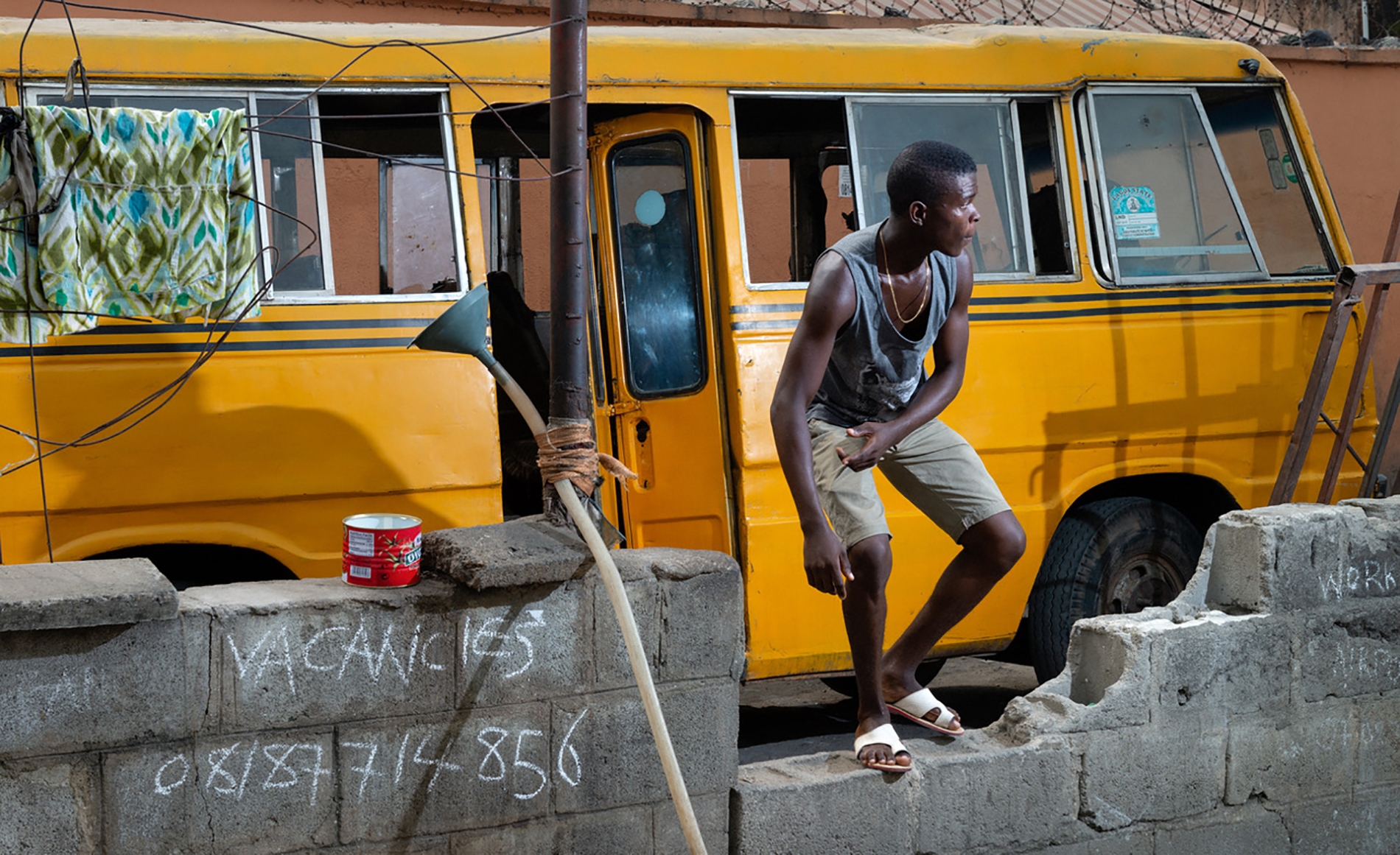
Photo 2 © Bas Losekoot 
Photo 3 © Bas Losekoot 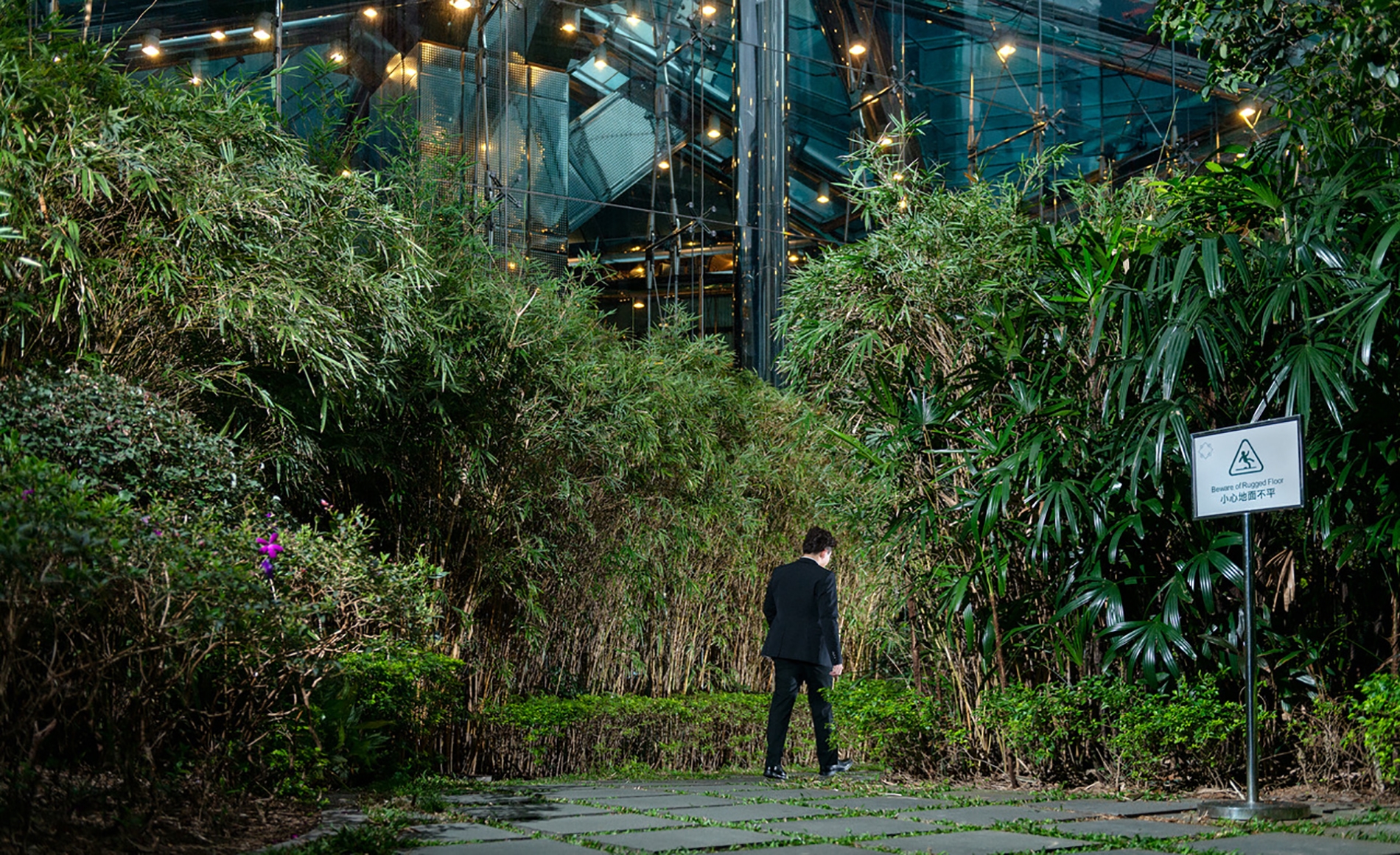
Photo 4 © Bas Losekoot 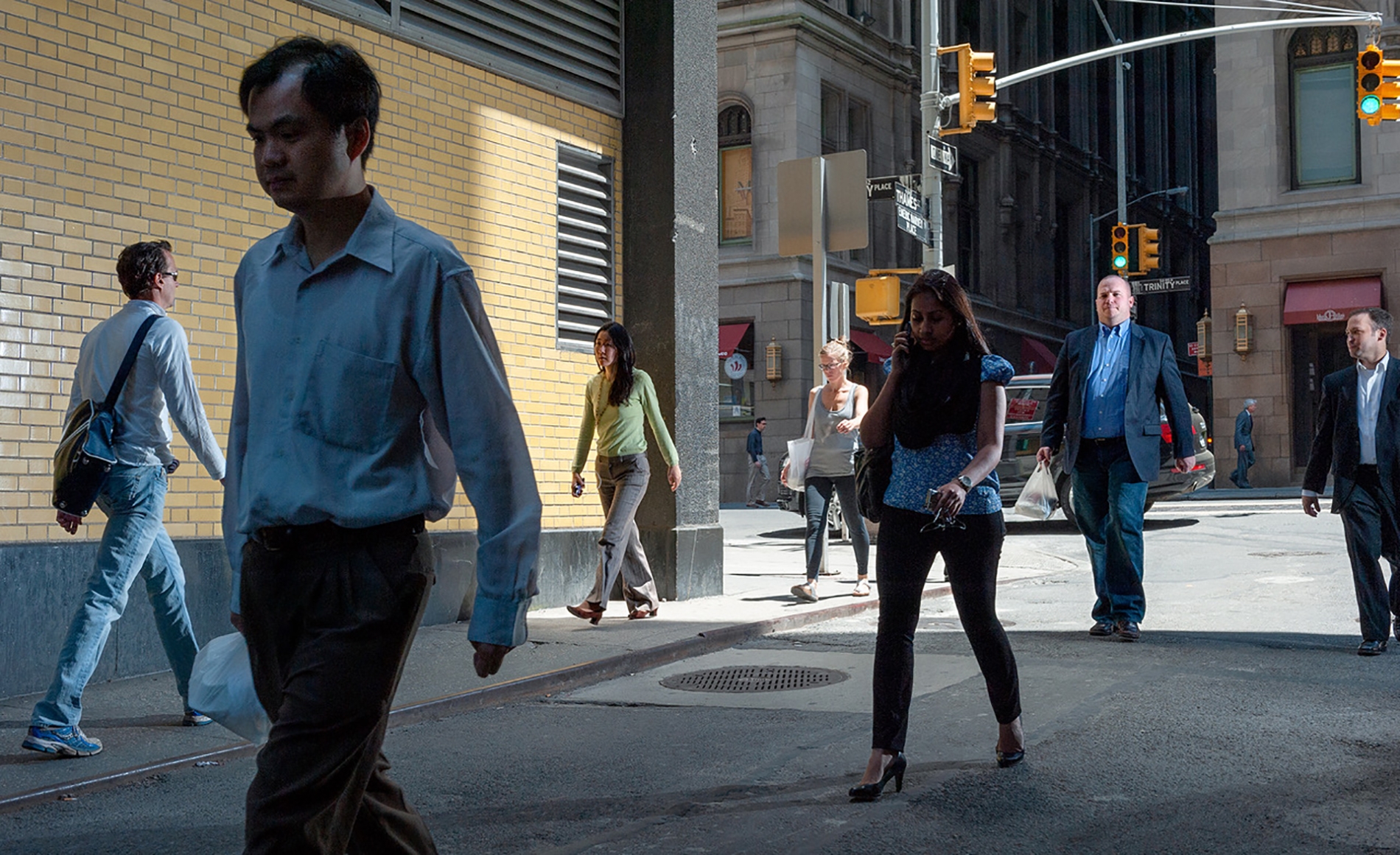
Photo 5 © Bas Losekoot 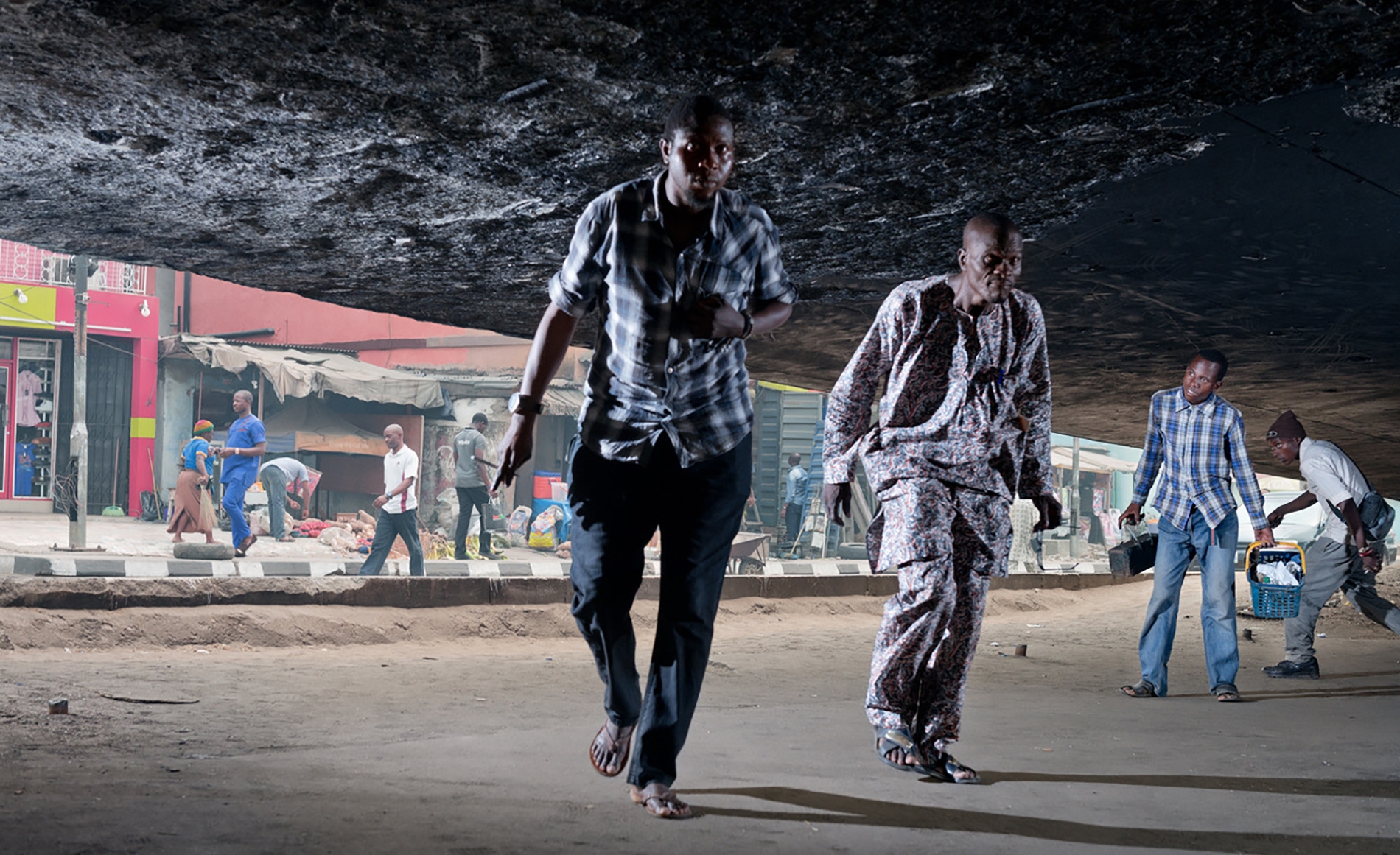
Photo 6 © Bas Losekoot 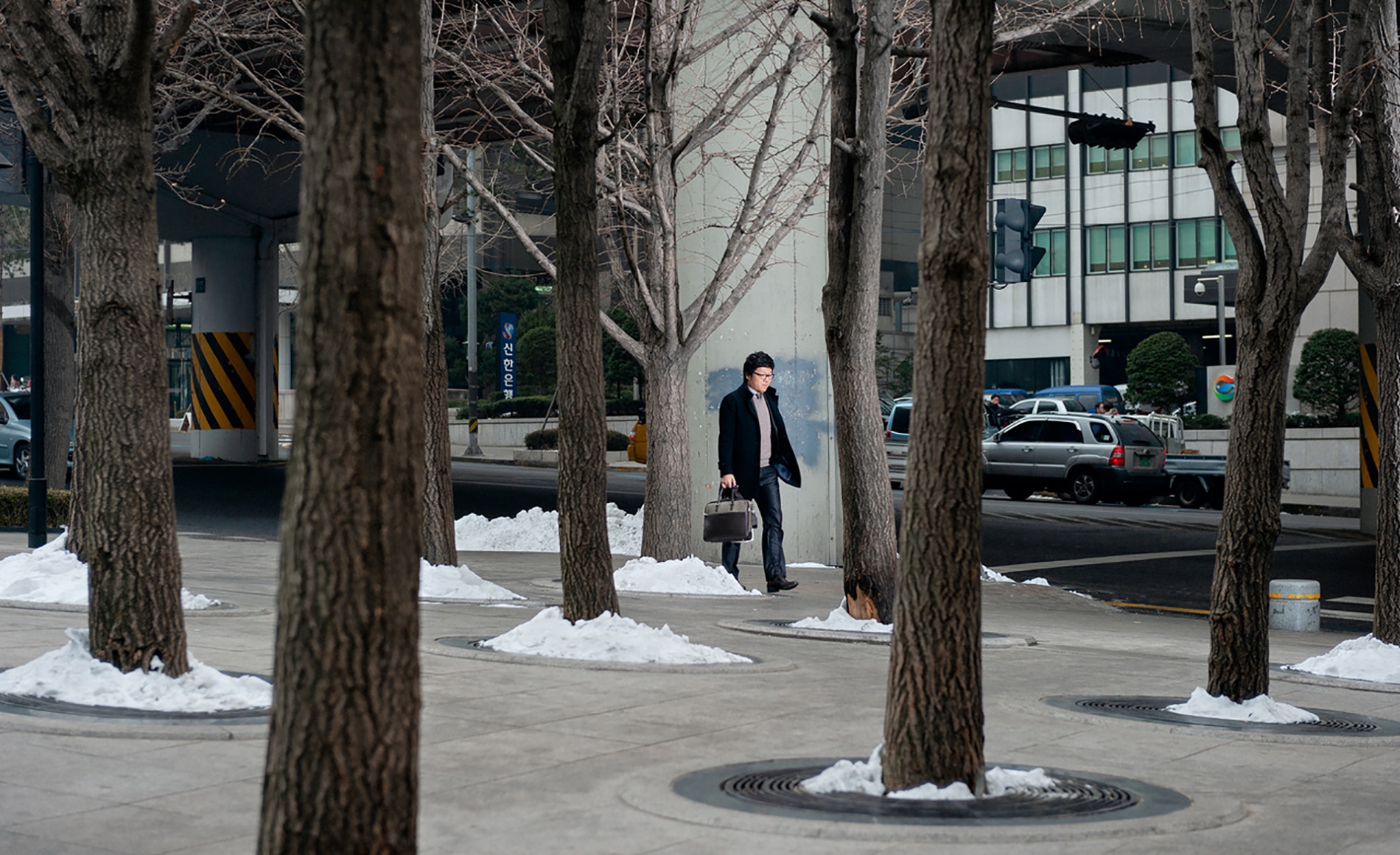
Photo 7 © Bas Losekoot 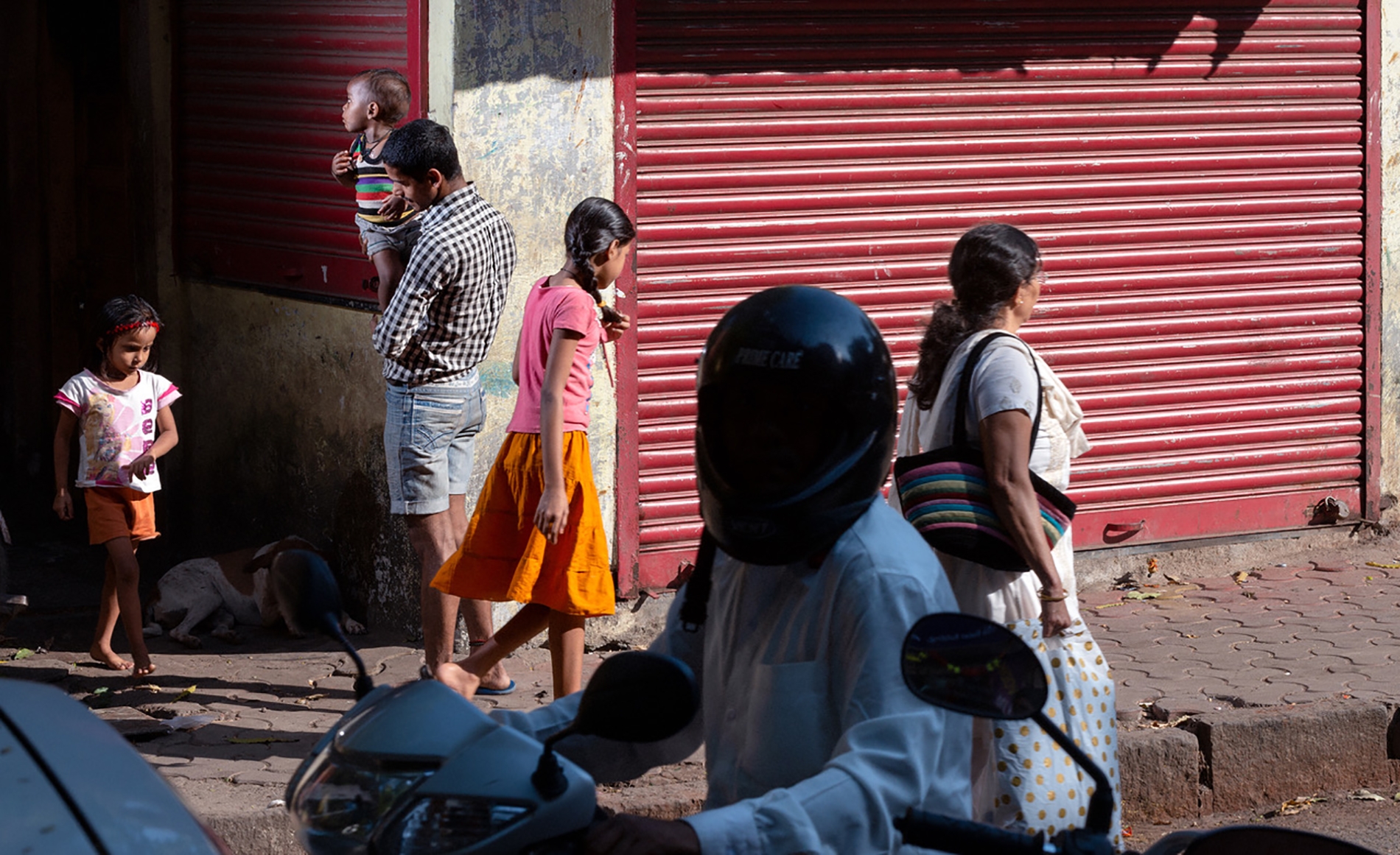
Photo 8 © Bas Losekoot 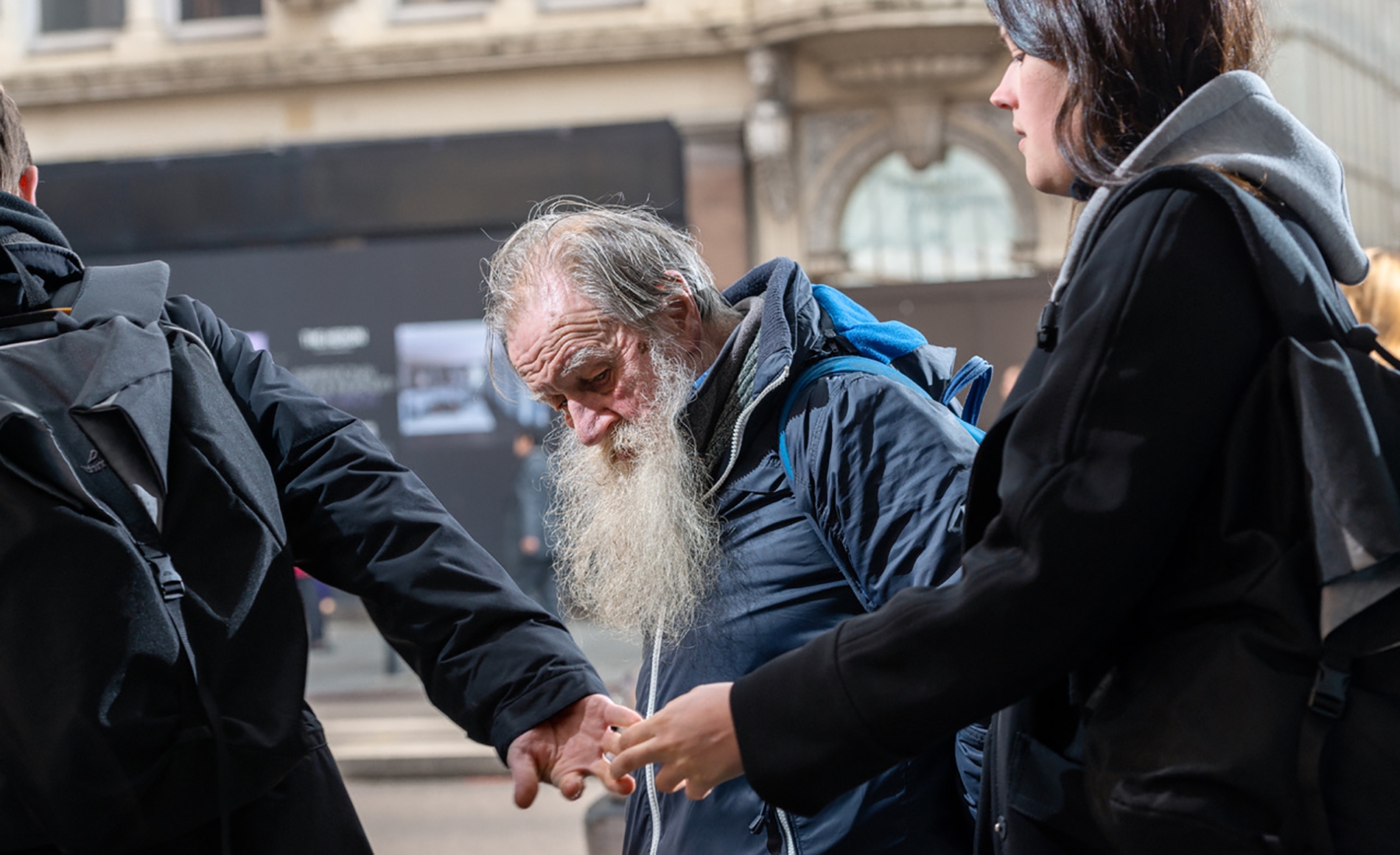
Photo 9 © Bas Losekoot 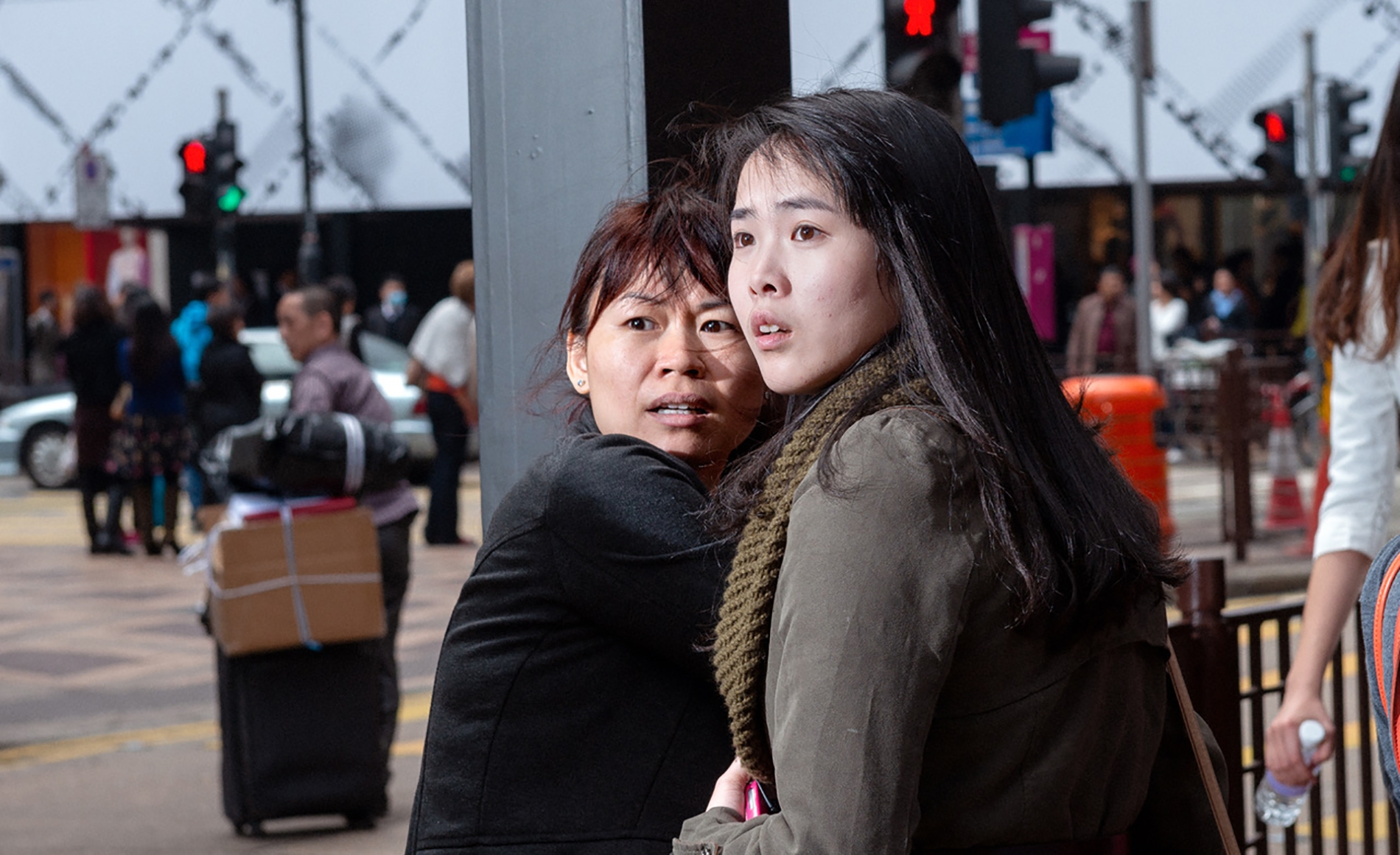
Photo 10 © Bas Losekoot 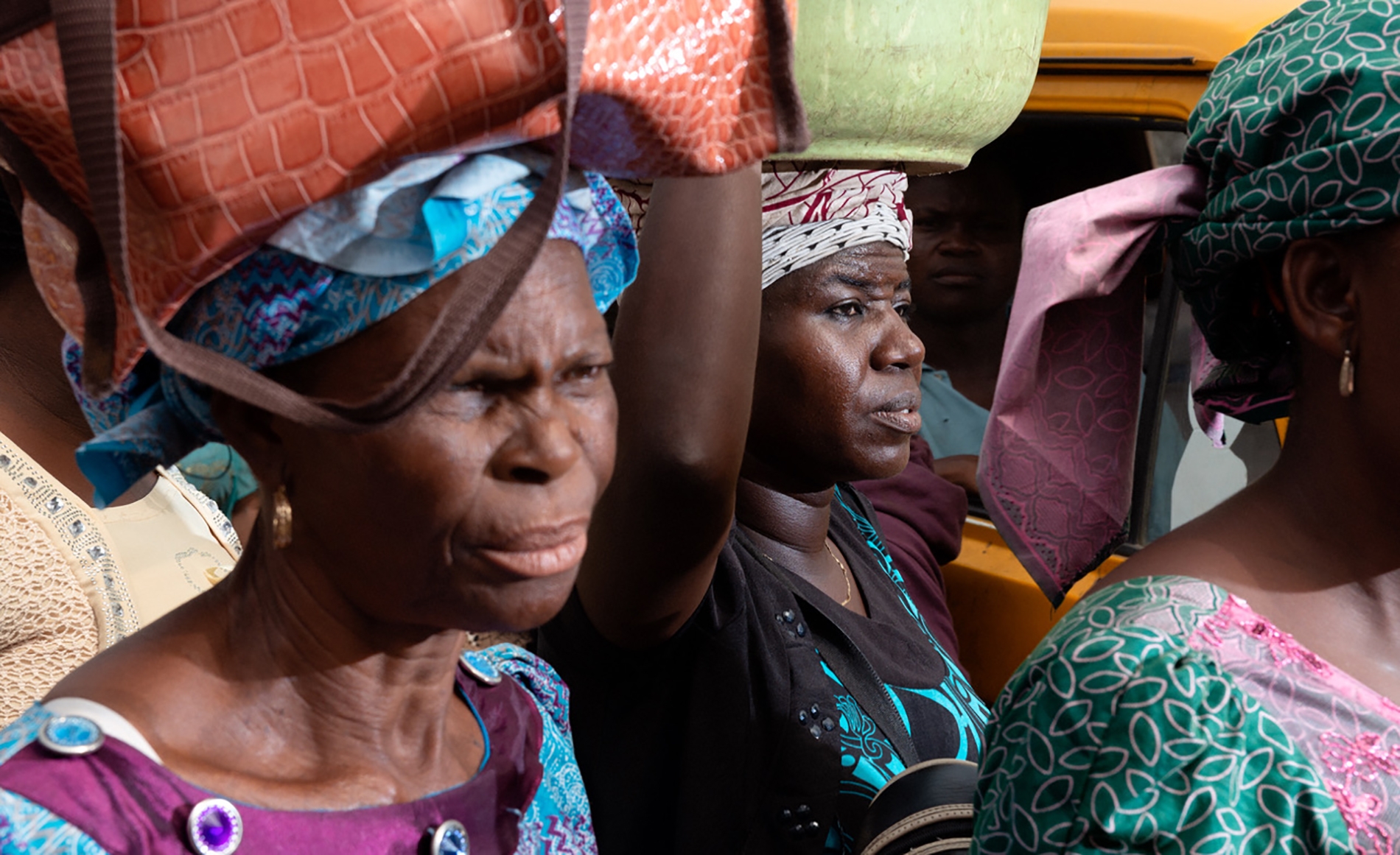
Photo 11 © Bas Losekoot 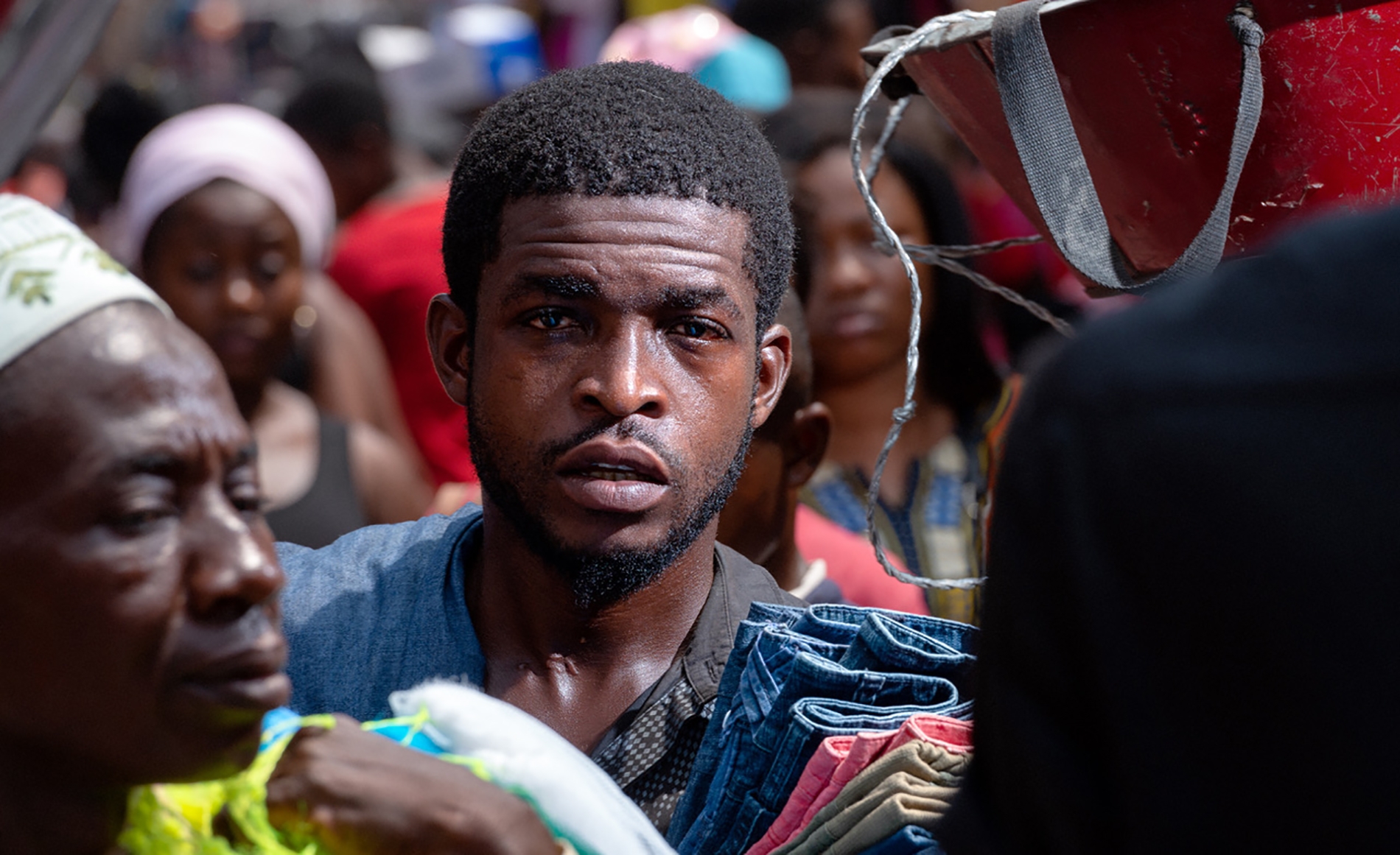
Photo 12 © Bas Losekoot 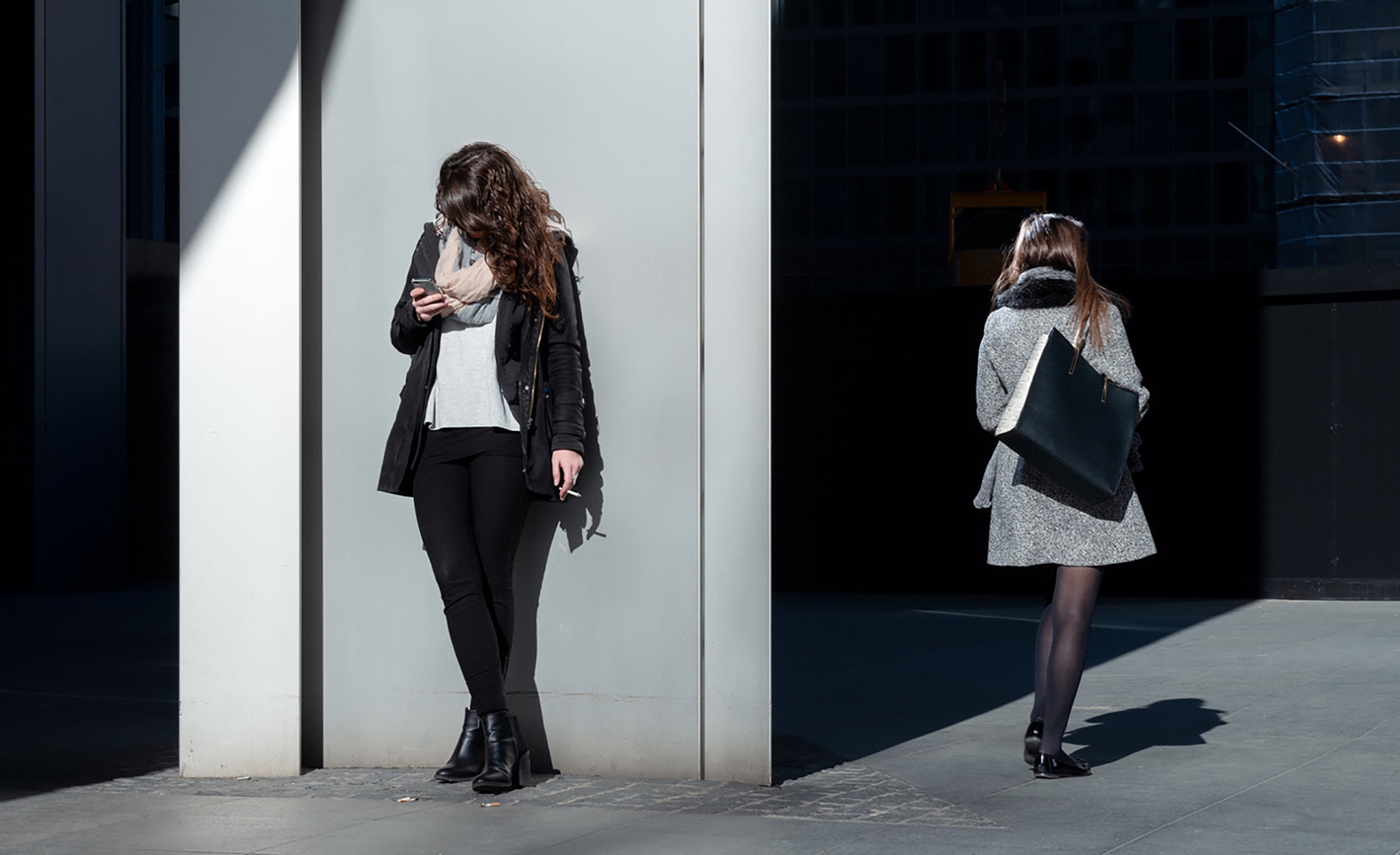
Photo 13 © Bas Losekoot 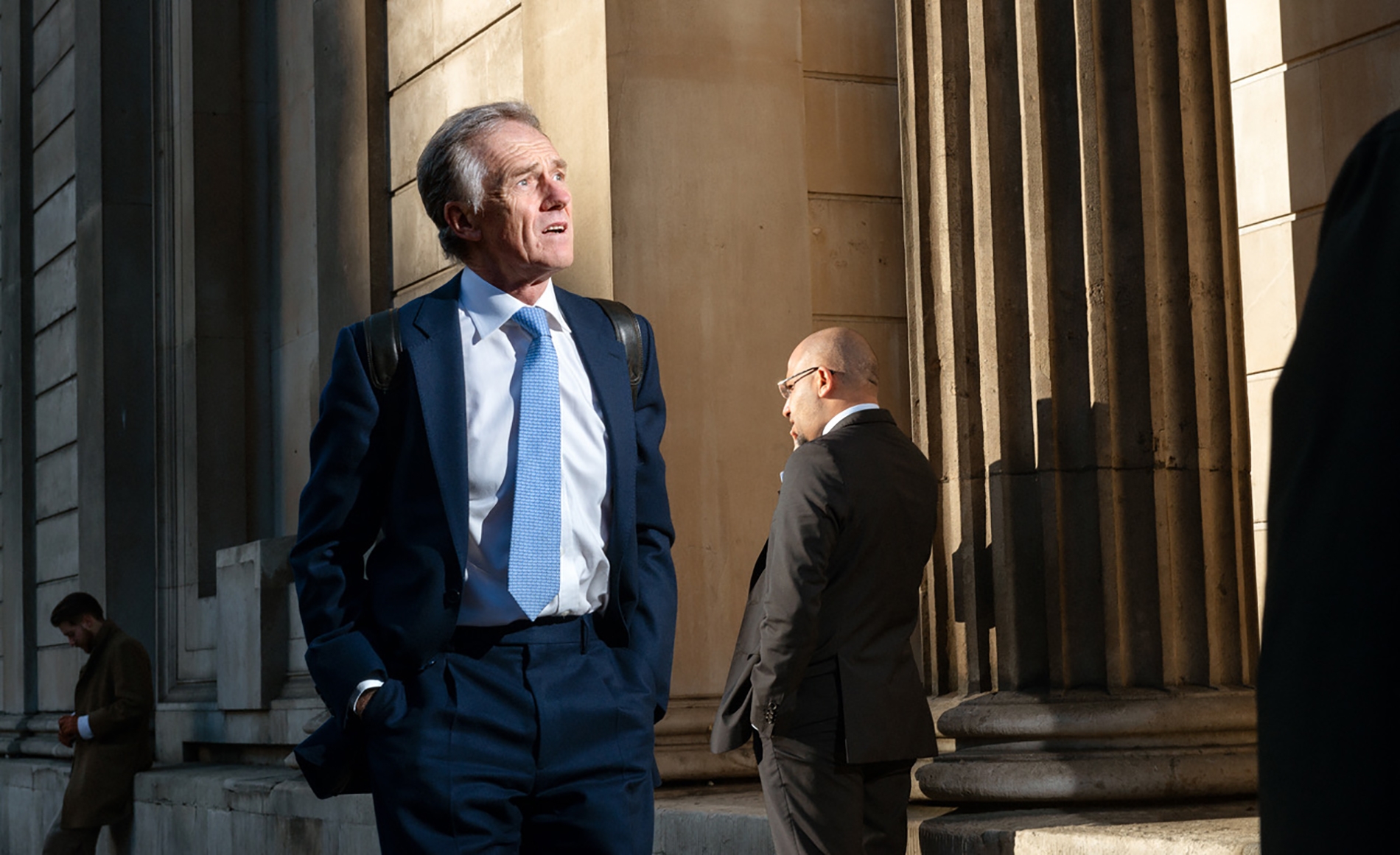
Photo 14 © Bas Losekoot 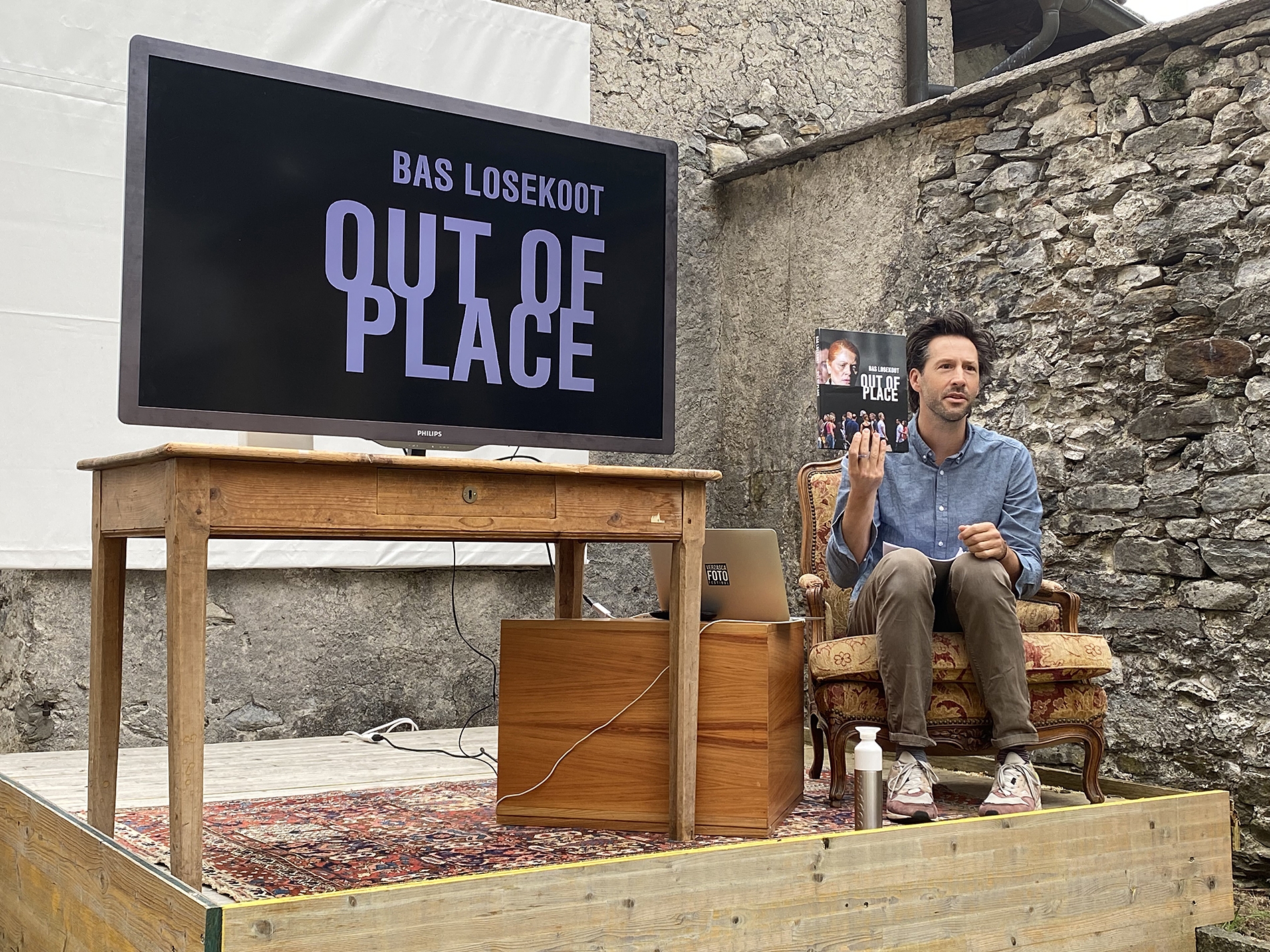
Photo 15 © Matteo Cheda
Photo 1 à 14 – De la série «Out of Place» / Dalla serie «Out of Place» / From the series «Out of Place» © Bas Losekoot
Photo 15 – Bas Losekoot lors de la présentation de son travail au Verzasca Foto Festival / Bas Losekoot durante la presentazione del suo lavoro al Verzasca Foto Festival / Bas Losekoot during the presentation of her work at the Verzasca Foto Festival © Matteo Cheda